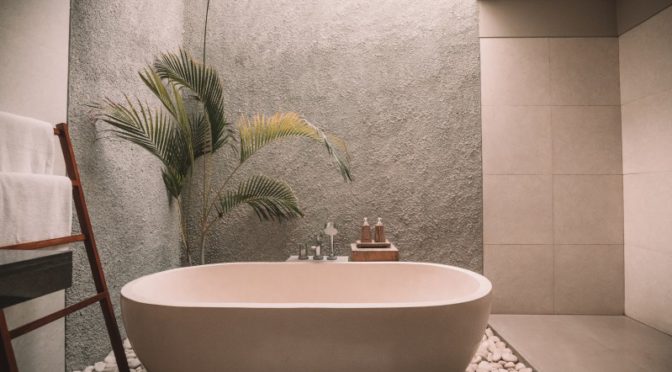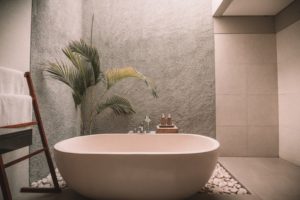
While you can buy bare flooring made from a range of synthetic and organic materials, the truth is that some kinds of floors work better in certain spaces than others. If you’re looking for floors for wet areas–places like bathrooms, basements, kitchens, and outdoor spaces–you’re going to want materials that stand up to moisture, humidity, and standing water. Today we’re going to look at great, good, and poor choices for water-resistant flooring to help you figure out which floors work best for which areas on a given budget.
Do synthetic or natural materials have better water resistance?
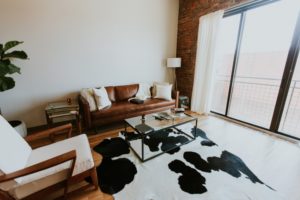
While it’s possible to find natural flooring with some degree of water resistance, it’s rare, and the level of water tolerance still won’t match that of a high-end synthetic. As a result, today we’ll focus exclusively on synthetic materials, as these generally hold up better in high-moisture environments than natural materials. The primary exception is carpeting. It doesn’t matter which synthetic material you use–nylon, olefin, polyester, or triexta–they won’t work well in wet areas because the tremendous surface area of carpets makes them much slower to release water, whether through evaporation or through active water extraction via mopping and carpet cleaners, than bare floors.
What are the best floors for wet areas?
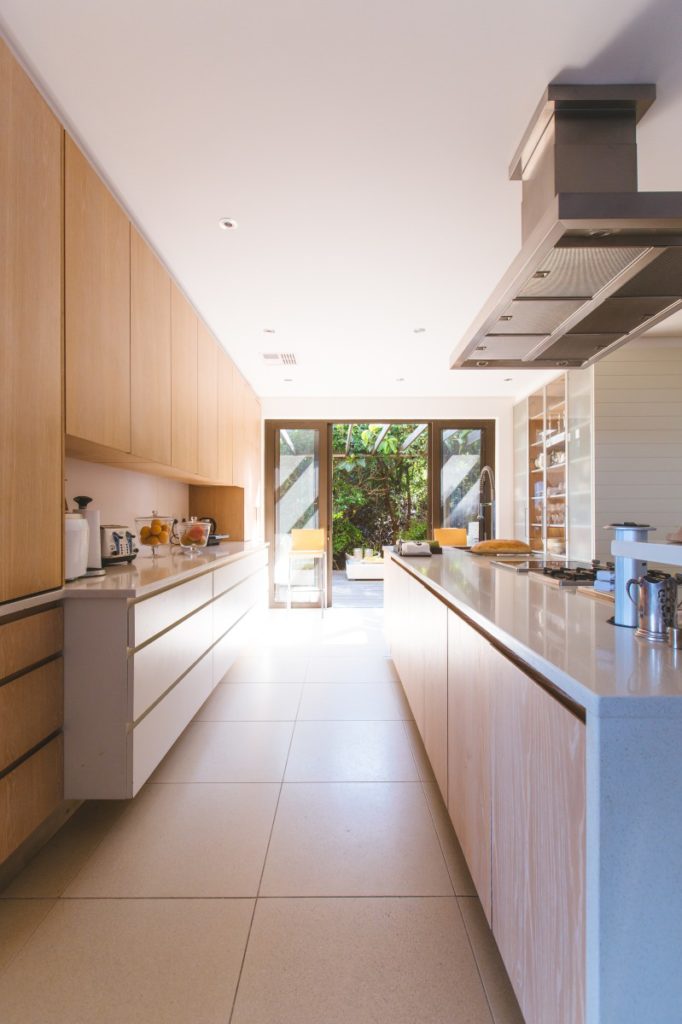
The best choices for full bathroom, kitchen, and basement installations are floor coverings that are highly water resistant, if not completely waterproof. Porcelain tile is the leader in this area; this is why you’ll find it throughout bathrooms, including in showers, around bathtubs, by swimming pools and spas, and in other areas where frequent exposure to moving and standing water can be expected.
Ceramic tile is a close second, and will perform almost as well as porcelain tile around water. The vulnerabilities of both are tied to the grout between the tiles; you’ll want to make sure it’s completely sealed to avoid water issues beneath the tile.
Vinyls perform about as well as tiles when it comes to waterproofing; the downside with them is that they aren’t as resistant to scratches and cuts, although vinyl, unlike tile, won’t crack. Sheet vinyl is best, followed by plank and tile vinyl. The hierarchy comes from the lower-to-greater proportion of seams; the more seams present, the more water is likely to infiltrate beneath the vinyl itself.
Concrete is a third excellent choice when properly sealed; it’s also one of the most durable flooring options available. The only reason we list it in third position is because, while common in industrial settings like office environments and modern restaurants, it’s much rarer in homes.
Which floor coverings do an acceptable job in wet areas?
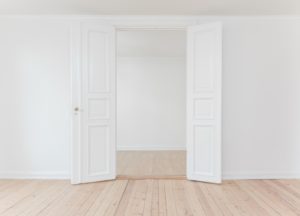
Acceptable floors aren’t going to resist water the way superior floor coverings will. However, with waterproof surfaces, they can handle temporary pooling of water without damaging their interiors. The broad categories are engineered wood, laminates, linoleum in sheet or tile form, and bamboo flooring.
Engineered wood is the best option of the bunch because its plywood base is more resistant to moisture than the wood chips and fiberboard used in laminate flooring. Linoleum, like laminate, is made up of composites, and water can sneak past its seams to the weak underlayer. Bamboo is organic but his heavily processed with water-resistant resins, making it better capable of tolerating water than natural woods.
Which floorings should you avoid for wet areas?
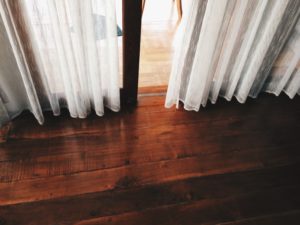
The following floors simply aren’t going to work well in wet areas. If you’ve read this far, you probably have an idea of which they are: solid hardwoods and carpets. Solid hardwoods aren’t good choices for bathrooms, basements, or kitchens, as they’re never as strong, straight, or sound once they’ve become waterlogged.
Site-finished hardwood will hold up a shade better than pre-finished woods when it comes to moisture resistance. This is because the sealant used to finish the woods on site will fill seams to some degree and help slow down the passage of water beneath the boards. Pre-finished woods, in contrast, are vulnerable to water both above and below planks; this means they can be damaged much more quickly when disasters strike, such as when washing machines, sinks, or showers overflow, or when pipes break. In fact, even an open window during a thunderstorm can lead to ruined wood.
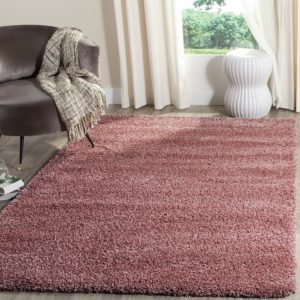
Carpets are the other big category of no-nos for high-moisture installations. They don’t work well in bathrooms or kitchens, although they can work in basements if they’re kept absolutely dry. The main flaws with carpets are, as noted above, their tendencies to retain water due to the much greater surface area in carpeting compared to in bare flooring. This makes them a haven for mold and mildew, not to mention vulnerable to physical damage like buckling. While synthetic materials will be hardier than natural ones, you’re still not going to want to take the risk.
Which vacuums work best for the bare floors in bathrooms, kitchens, and basements?
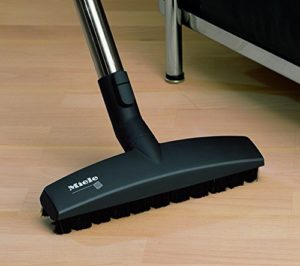
We’ll be honest: unless you’re using a wet / dry vacuum, there isn’t a regular vacuum out there that will be happy to clean up a wet floor. However, presuming your floors are dry when you clean them, here’s what we recommend. You want a vacuum with a Parquet head; these will be more efficient when it comes to picking up dirt instead of just pushing it around due to air currents generated from the vacuum head.
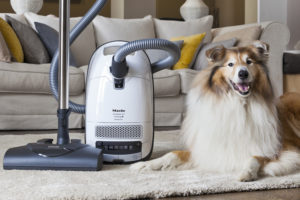
However, unless you don’t have any carpet whatsoever in your home, it’s also wise to choose a vacuum with multiple heads so you can tackle bare floors and carpets without switching machines. High end canisters like the Miele Complete C3 Cat & Dog (reviewed here and here) or Miele Compact C2 Electro+ (reviewed here and here) let you clean both surfaces, as they include Parquet heads to make quick work of bare floors and powered electric heads that will let you clean carpets of varying piles and styles without skipping a beat.
![]() You can buy the Miele Complete C3 Cat & Dog here on Amazon or buy the Miele Compact C2 Electro+ here.
You can buy the Miele Complete C3 Cat & Dog here on Amazon or buy the Miele Compact C2 Electro+ here.
![]() Canadians can buy the Miele C3 Cat & Dog here or buy the Compact Electro+ here.
Canadians can buy the Miele C3 Cat & Dog here or buy the Compact Electro+ here.
 If you find our research on PMC helpful, you can follow our efforts to keep maniacally reviewing home cleaning tools by shopping through our links above. We promise to keep fighting the good fight against every horror children, animals, and grown, yet messy humans can inflict upon a clean home.
If you find our research on PMC helpful, you can follow our efforts to keep maniacally reviewing home cleaning tools by shopping through our links above. We promise to keep fighting the good fight against every horror children, animals, and grown, yet messy humans can inflict upon a clean home.

